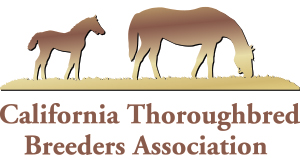By Jay Hovdey, DRF.com
ARCADIA, Calif. (Apr. 3, 2014) — With major stakes winners Candy Boy, Hoppertunity, and California Chrome in the mix, there is a good chance that the results of the $1 million Santa Anita Derby will resonate well past the end of its nine furlongs late Saturday afternoon.
You like to see a race have legs, especially a historically rich race like the Derby, despite its role as a feeder event for that other Derby at Churchill Downs. Of course, there’s no getting around it. But nothing says the top finishers of the Santa Anita Derby can’t have lives of their own after the first Saturday in May.
[Santa Anita Derby Day: Get PPs, watch Saturday’s card live]
Neither A.P. Indy nor Bertrando, 1-2 in the 1992 Santa Anita Derby, had anything to do with the Kentucky Derby that year. In the end, it did not matter. A.P. Indy, a $2.9 million yearling, recovered from foot trouble to win the Belmont Stakes, the Breeders’ Cup Classic, and Horse of the Year, while Bertrando went on to be the champion older horse of 1993.
The death of Bertrando late last month at the age of 25 stirred recollections of a gifted Thoroughbred’s career commingled with flights of human fancy.
I’m sure there have been racehorses bred by friends of Hugh Hefner. There certainly have been any number named for a guy who owns a snazzy restaurant. And while it doesn’t happen every day, there have been Thoroughbreds here and there who have run under the name of a trainer’s teenage son.
Bertrando was all that and more. He raced for three different trainers, lost hunks of two seasons to illness and injury, went off to stud, and came back, and through it all, he still managed to win graded stakes at 2, 3, 4, and 5.
Were it not for the two freakiest foreigners in the history of the Breeders’ Cup, Bertrando would have won the 1991 Juvenile (taken by Arazi, who circled the field) and the 1993 Classic (won by Arcangues, who was 134-1). Both were trained by Frenchmen, which hurt, since Bertrando was named for Bertrand Hug, the French expatriate who brought his native cuisine to the wilds of San Diego through his landmark Mille Fleurs eatery in Rancho Santa Fe.
Eddie Nahem was a pal and regular customer. He also was a dealer in art and antiques, lived in Beverly Hills, and dressed like a refugee from a modern version of “Guys and Dolls.” Somehow he got hold of a young Buffalo Lark mare named Gentle Hands, bred her to Breeders’ Cup Classic winner Skywalker, and eventually sold the resulting near-black colt to Gus Headley, the 15-year-old son of trainer Bruce Headley.
The Headleys won the Del Mar Futurity with Bertrando in his second start, at which point Nahem jumped back in with movie mogul Marshall Naify just in time to join Bertrando in the winner’s circle after he won the Norfolk Stakes by eight.
I’ll let you know when I start making things up.
Bruce Headley wasn’t sure if he had a Kentucky Derby horse, but he gave Bertrando every chance. The headstrong colt won the San Felipe at the start of 1992, then ran into A.P. Indy in the Santa Anita Derby, after which an illness sent him to the sidelines for the rest of the season. When he returned at the end of 1992, the Headleys were no longer involved. Bertrando was now trained by Bobby Frankel.
Gary Stevens entered the picture halfway through Bertrando’s 4-year-old season, when the colt went to New York and ran second in the Met Mile. Later, they won the Pacific Classic by three lengths and the Woodward by 13 1/2, but Stevens would trade them both for another shot at the BC Classic.
“That was my most disappointing moment in racing,” Stevens said. “He deserved to win it so much. At this stage of my life, I probably would have waited a little longer to ask him in the stretch. But in my mind, there was no one behind me capable of running us down. And then Arcangues ran us down – the longest price in the history of the Breeders’ Cup.”
Bertrando was voted champion anyway.
“He was a very unique horse,” Stevens said. “Almost human in that he learned and improved with every race. He could sprint six furlongs in 1:07 if you wanted or carry that speed a mile and a quarter.”
Bertrando had bone chips removed from his knees in late 1993 and spent part of his recuperation servicing a few mares. Upon his return, the new man in his corner was John Shirreffs, elevated from assistant trainer to train privately for Naify’s 505 Farms.
“Bertrando taught me how to train,” Shirreffs said. “Prior to that, I’d never been around a Grade 1 horse at the racetrack. What did he teach me? That good horses run in spite of their training.”
Shirreffs was being glib, but his point was well taken. Even the 5-year-old, post-surgery version of Bertrando displayed his old spark by winning Oak Tree’s Goodwood Handicap at Santa Anita (now the Awesome Again) before tailing off in his final starts. His last race was in January 1995.
Bertrando spent 16 years at stud, all but the last at Martin Wygod’s River Edge Farm. He had graded stakes winners from his first crop and a Grade 1 winner in his next-to-last. Fittingly, that last one was the winner of the 2013 Del Mar Futurity, Tamarando.
“He was a real soldier, always willing,” Shirreffs added. “He was probably the classiest horse I’ve ever been around.”
From Zenyatta’s trainer, that’s saying a lot.


